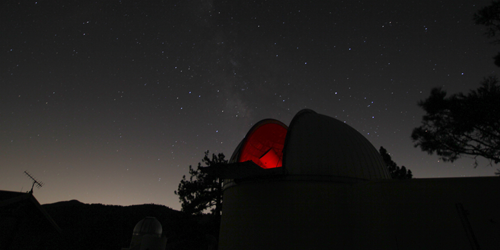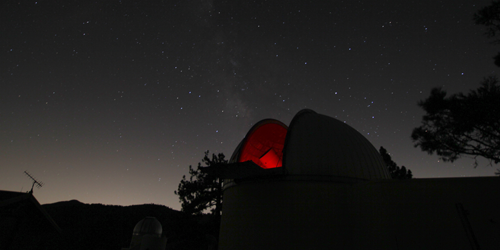Random Bit Stream from Cosmic Light
Quantum physics is well established, but some “loopholes” remain for those diehards who want to avoid its weird consequences. One of these loopholes, which affects so-called Bell experiments that test quantum physics, involves a possible correlation between the particles used in the experiments and the supposedly random selection of detector settings. Such a connection could alter the particles such that their behavior appears quantum when they reach the detector. To close this “freedom-of-choice” loophole, researchers have now devised a scheme that generates random numbers using light from distant stars and quasars.
Jason Gallicchio from Harvey Mudd College in California and his co-workers first developed their random-number generator to assign detector settings for a Bell test they carried out in 2017. Using light coming from Milky Way stars, they ruled out any local correlations between particles and detectors going back 600 years into the past (see 7 February 2017 Synopsis). They have now improved the protocol so that it works faster and with objects farther away. For their sources, they chose 50 stars and 12 quasars. Some of the latter are billions of light years away, which would mean that any sort of correlations with a terrestrial detector would need to have been established near the beginning of the Universe. The scheme picks bit values based on whether or not a detected photon’s wavelength is longer than 700 nm, producing random bits at a rate as high as Hz using the stars, or Hz using the quasars. This high-speed process could be useful in a “delayed-choice” experiment, in which a random generator chooses an interferometer’s settings after a particle enters the device and before it reaches the end.
This research is published in Physical Review A.
–Michael Schirber
Michael Schirber is a Corresponding Editor for Physics based in Lyon, France.





